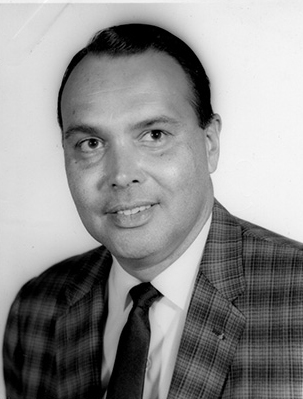 Thomas S. Hargest was born in 1925, in Phillipsburg, NJ. He earned a B.A. from Lafayette College (PA) in 1950 and studied field geology at the University of Missouri. Hargest served in the military between 1942 and 1948 and afterwards began a career in the oil industry, initially as a Geophysicist. In 1964, he moved to the Engineering Development Section at the Shriners Burn Institute, a position that most certainly influenced several of his later innovations. In 1965, he made the move to MUSC, where a new department was created and helmed by Hargest. From 1965-1985, Hargest served as the Director of the Division of Clinical Engineering and Professor of Surgery at MUSC. After his retirement, he continued to work as an independent consultant, as well as holding the position of Adjunct Professor of Mechanical Engineering and Bioengineering at Clemson. Hargest was and is a prolific inventor and holds numerous patents related to medical equipment and devices. Two of his most notable innovations are the Fluidized Air Bed and the Self-Contained Input Regulated Transponder, or, SCIRT Pump.
Thomas S. Hargest was born in 1925, in Phillipsburg, NJ. He earned a B.A. from Lafayette College (PA) in 1950 and studied field geology at the University of Missouri. Hargest served in the military between 1942 and 1948 and afterwards began a career in the oil industry, initially as a Geophysicist. In 1964, he moved to the Engineering Development Section at the Shriners Burn Institute, a position that most certainly influenced several of his later innovations. In 1965, he made the move to MUSC, where a new department was created and helmed by Hargest. From 1965-1985, Hargest served as the Director of the Division of Clinical Engineering and Professor of Surgery at MUSC. After his retirement, he continued to work as an independent consultant, as well as holding the position of Adjunct Professor of Mechanical Engineering and Bioengineering at Clemson. Hargest was and is a prolific inventor and holds numerous patents related to medical equipment and devices. Two of his most notable innovations are the Fluidized Air Bed and the Self-Contained Input Regulated Transponder, or, SCIRT Pump.
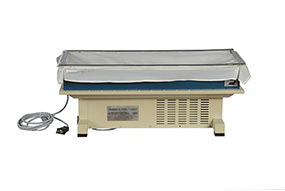
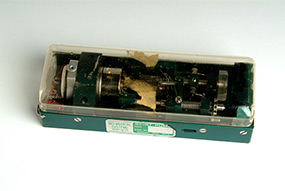
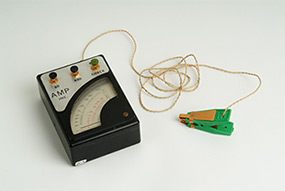
Air Bed
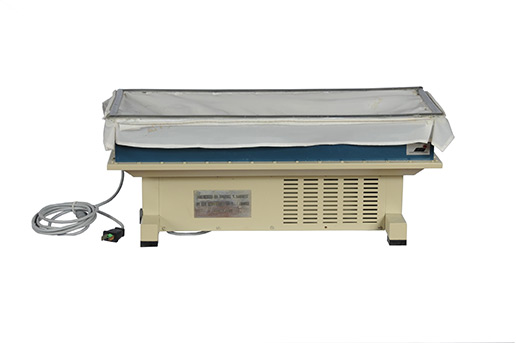
The idea for a Fluidized Air Bed came to Hargest while working with ceramic spheres in the mid-1960’s. Hargest surmised that a patient could be supported by these spheres in an air-fluidized system. The bed itself is “fluidized” by a blower which sends warm air through a porous board. The ceramic spheres are suspended in warm air and take on the characteristics of fluid. The bed distributes pressure over a wider area of the body thus reducing the pressure on any one spot. It is extremely valuable in the treatment of burn patients.
“The reduction in pressure points eliminates the need to turn the patient at regular intervals, thus decreasing the pain and discomfort associated with this procedure.’”
The Fluidized Air Bed has other applications as well. It has been used as an operating table for premature infants, for the treatment of insomnia, women in childbirth, patients suffering from Gullain-Barre and for general surgical patients. It is also useful in treating decubitus ulcers/bedsores, as well as being a helpful tool for those suffering from insomnia or emotional disorders; with better sleep, there is less need for medication.
Stanford, Elaine S., ‘Biomedical Engineering: Good News for Hospital Patients’ Sandlapper. March 1970, p. 18.
See: Stanford, Elaine S., ‘Biomedical Engineering: Good News for Hospital Patients’ Sandlapper. March 1970, p. 17.
SCIRT Pump
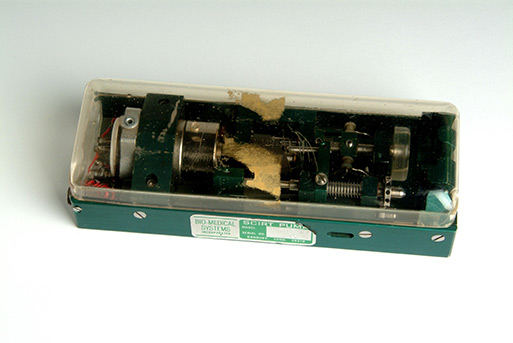
The SCIRT Pump played an instrumental role in some of the first organ transplant surgery in South Carolina. The device itself assists in immunosuppression, a technique thought to lessen the rejection of foreign organs in transplant procedures. The pump was used to transfer lymph from the thoracic duct back into to the venous system, once the duct was cannulated. The pump sensed flow and could regulate itself to pump at the rate of flow without further adjustment. It also injected heparin into the outflow to prevent clotting and an offsetting drug into the return flow to return the blood to a normal clotting time.
See the Waring online exhibit on MUSC’s first major organ transplant: http://waring.library.musc.edu/exhibits/kidney/index.php
Drip Counter
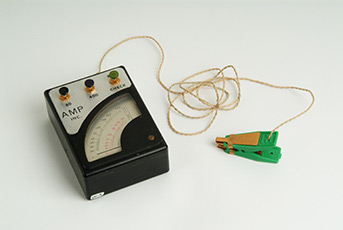
In addition to the Fluidized air bed and the SCIRT pump, Hargest also holds patents for a tremendous number of additional innovations. Some of these include: the Drop Count Meter (which determined the drop rate on IV fluid therapy), the Negator Pump, an Improved Gastric Feeding Device, many modifications on the Fluidized Air Bed, and one improvement on the SCIRT Pump.
